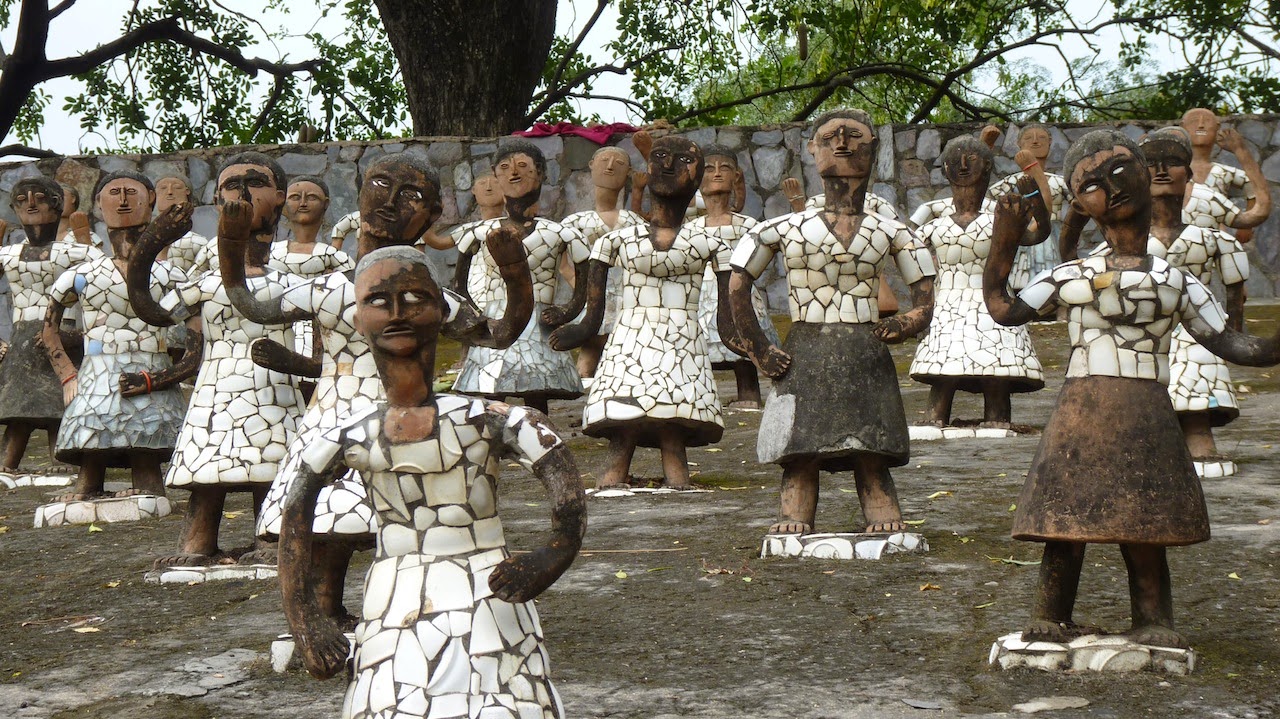Goa is shrouded in a mythology of hippies, sophisticated party
goers, European tourists, and remnants of Portuguese culture. Vast numbers of charter flights now
descend on Goa during the season, many of them carrying the new Russian middle-class
looking for their place in the sun.
Over Christmas and New Years, Mumbai’s “high society” takes over the
bars and restaurants with nonstop parties. Real estate prices have climbed through the roof, and a taxi
mafia has a stranglehold on trips from the airport. And yet, pockets of bohemia still exist, and hippies manage
to cling to this laid-back piece of paradise.
The first thing we noticed about Goa is how lush it is. The drive from the airport to my aunt’s
house in North Goa was lined by rich tropical foliage, and we passed through lots
of small villages and shorelines dotted with fishing boats. Everything moves at a relaxed, easy
pace, in marked contrast to Mumbai, from where we had just come.
We arrived a few days before Diwali, the Hindu New Year, and
we saw many Goans building gigantic paper-mache demons. Some of these demons were over 20 feet
tall.
The demons represent the evil King Narkasur, a former Goan
king, who was defeated by Lord Krishna in the early hours before Diwali. In celebration of and gratitude for this,
every year, men gather around their paper-mache demons and drink themselves silly
while a DJ pumps house music. Then,
around 4am, the men attack the demon, beating and kicking it and setting fire
to it. Unfortunately, we weren’t awake
to witness this.
We stayed at my aunt’s home on the banks of the Nerul River
in the village of Nerul; as a fashion designer and artist, she has created an
appealing and welcoming environment, dotted with her acquisitions from all over
the world. Her husband has created
a riotous garden full of interesting plants and the entire effect is one of harmony
and balance.



The Goan government had just launched a women’s taxi service
a few days before we arrived so we hired one of them to take us around Goa but
she kept taking us to various churches.
We preferred to just wander around and soak in the laid-back atmosphere,
and we also paid a visit to the arts center, set in a leafy residential
neighborhood on a hill in a restored old home that is an examplar of Portuguese
architecture, with its central courtyard, beautiful old tiles, archways and woodwork.

 |
| central courtyard is signature feature of Goan architecture |
 |
| Lovely old original tiles |
One of the highlights of our trip to
Kerala in 2012 was a trip down the river in a houseboat powered entirely by a
man using a pole. Since Goa is very
near Kerala, and has similar terrain, including lots of waterways, we wanted to
replicate that experience here, if not on a houseboat, then at least by a boat
that didn’t use engines because the lack of noise creates a lovely peaceful environment.
Unfortunately, that option was not
to be.
In Kerala, we had seen lots of brahminy kites, majestic
copper-colored eagle with white breasts and heads, and these birds are equally
prevalent in Goa. The boatman put
chicken heads on the boat to attract them, and I managed to get a shot of the kite
grabbing its meal.
Unfortunately, I didn’t get many good bird shots because the
engine scared away the smaller birds before we could get close enough. But I did manage a few, and some decent
shots of the landscape, the river, and Goan architecture. Incredibly, we didn't have a chance to make it to any of the beaches. That will have to wait for our next trip.
 |
| Brahminy kite in flight |
 |
| Honey buzzard |
 |
| Kingfisher |

 |
| Goan sunset |



















































































